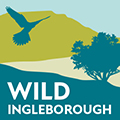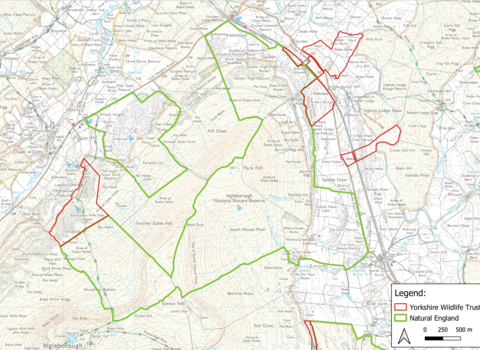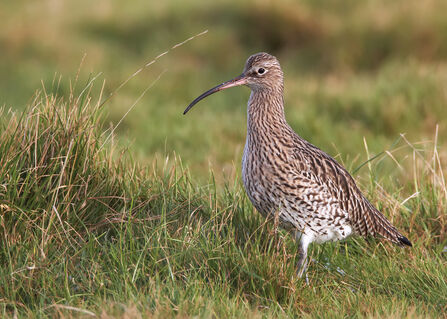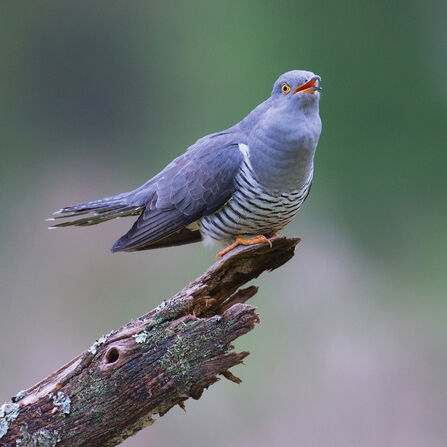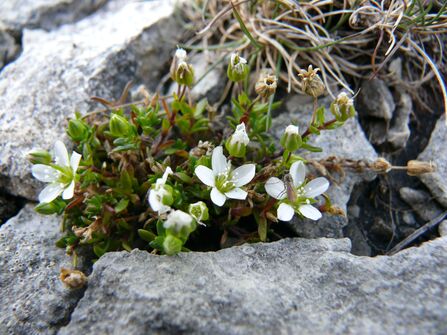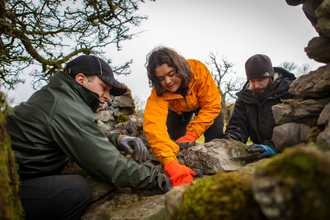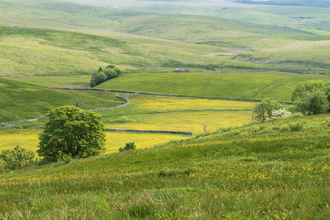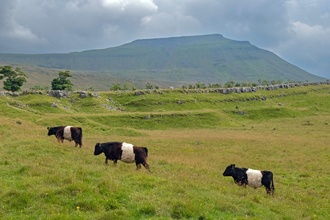Towards a wilder future
Our restoration of Wild Ingleborough began in earnest in 2021, and we are starting to see exciting results.
Through a balance of interventions, we are improving and expanding a mosaic of different habitats — from blanket bog and limestone grassland, to wood pasture and the unique limestone pavement that makes Ingleborough so remarkable — to support a diverse range of species.
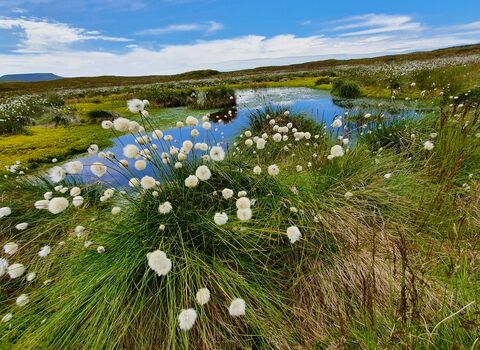
Ingleborough bog pool © Beth Thomas
Blanket bog
Bleak, treeless and often shrouded in low cloud, blanket bog can seem a desolate, empty habitat. Crouch down, though, and you'll find yourself in a forest of mosses and dwarf shrubs. In summer, the pools rattle with glittering dragonfly wings and the hilltops echo to the curlew's musical bubbling, white cottongrass bobs in the wind. Field voles burrow through the dense vegetation, seeking cover from short-eared owls. A skylark soars, trilling, parachuting back to the ground like a musical shuttlecock.
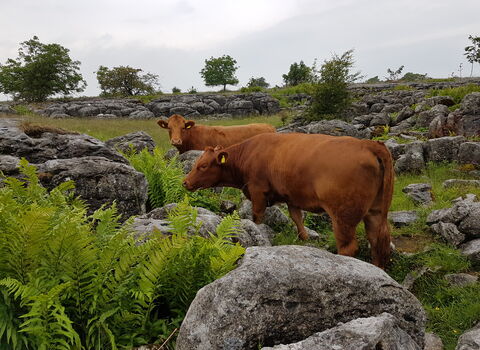
Cattle grazing limestone grassland - (C) Steve Ryder
Limestone grassland
The shallow, well-drained soils that have accrued between our limestone pavements are no less beautiful than the pavements themselves. Blue moor grass and Yorkshire's national flower, the bird's-eye primrose, can be found alongside English sandwort - a flower that grows only on Ingleborough. Grazing this habitat with cattle helps to maintain a rich and diverse range of flora.
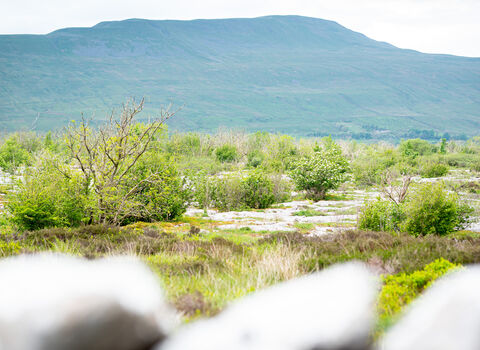
Limestone pavement © Finn Varney
Limestone pavement
Slabs of smooth grey rock, incised with deep fissures and patterned with swirling hollows and runnels sculpted by thousands of years of rainwater, form an unlikely wildlife habitat. Down in those fissures, ferns and wildflowers shelter below the reach of hungry mouths. As we change the grazing regime, shrubs and trees can take root and the pavement is blossoming with colour and life. Wild Ingleborough has some of the most astonishing limestone pavement in the world.
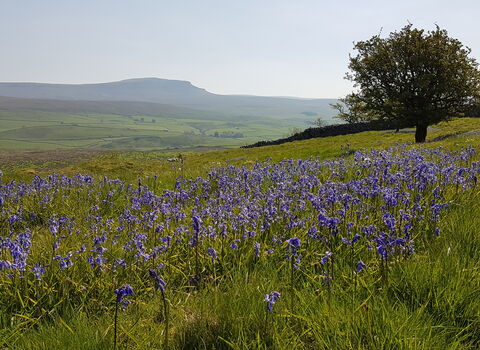
Brae Pasture - (C) Graham Standring
Wood pasture
Wood pasture, although managed through grazing, recreates how the landscape might have looked when bison and aurochs roamed prehistoric Yorkshire. Single trees and small groves are spread out across species-rich grassland. The wildflowers and trees provide cover and food for invertebrates, nesting sites and winter food for birds. The non-selective grazing behaviour of cattle creates varying height within the vegetation and their dung helps to spread seed and support invertebrates.
This mosaic of habitats supports species such as:
Curlew
Curlews are ground-nesting birds with a curved bill and haunting ‘cur-lee’ call. They are the characteristic ‘sound of the Dales’, but were added to the UK Conservation Status Report’s Red List in 2015.
Ingleborough is a stronghold for curlews and therefore of upmost importance.
Look and listen for curlews at Yorkshire Wildlife Trust's Ashes Pasture, Ashes Shaw and across the grasslands of the National Nature Reserve in the spring.
Cuckoo
Also famous for their call (you can hear it echoing across the Dales in June), the cuckoo is disappearing from the British countryside. It’s also on the conservation Red List.
Loss of natural UK habitat has played a huge role in the decline of the cuckoo, another reason why the landscape-scale restoration at Ingleborough is so significant.
Look and listen for a cuckoo at Ashes Pasture in the spring and summer.
Purple saxifrage
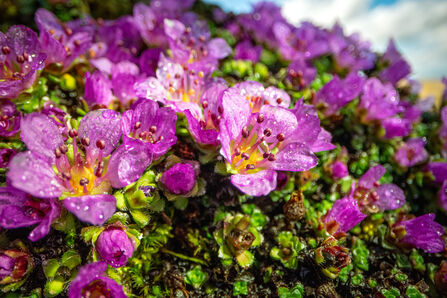
Purple Saxifrage - (C) Finn Varney
This very rare plant is only found on two mountains in the Yorkshire Dales, Ingleborough and Pen-y-ghent.
Look for purple saxifrage on the limestone crags of Ingleborough between February and May (but take care to stay back from the cliff edges).
Northern brown argus butterfly
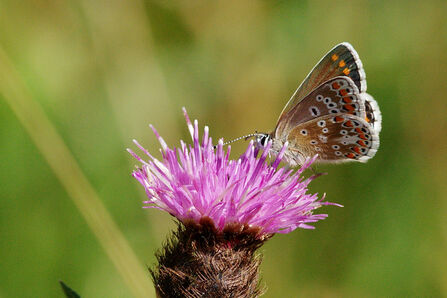
Northern brown argus - (C) Richard Willison
The northern brown argus butterfly is a warm, deep chocolate brown colour, with white margins around the wing.
They like common rockrose on limestone grassland and limestone pavement habitats, which are found mainly in UK uplands — and specifically on Ingleborough, and around Grassington and Settle in Yorkshire.
Look for the northern brown argus at Southerscales, Brae Pasture and wherever rockrose grows across the National Nature Reserve from June onwards.
